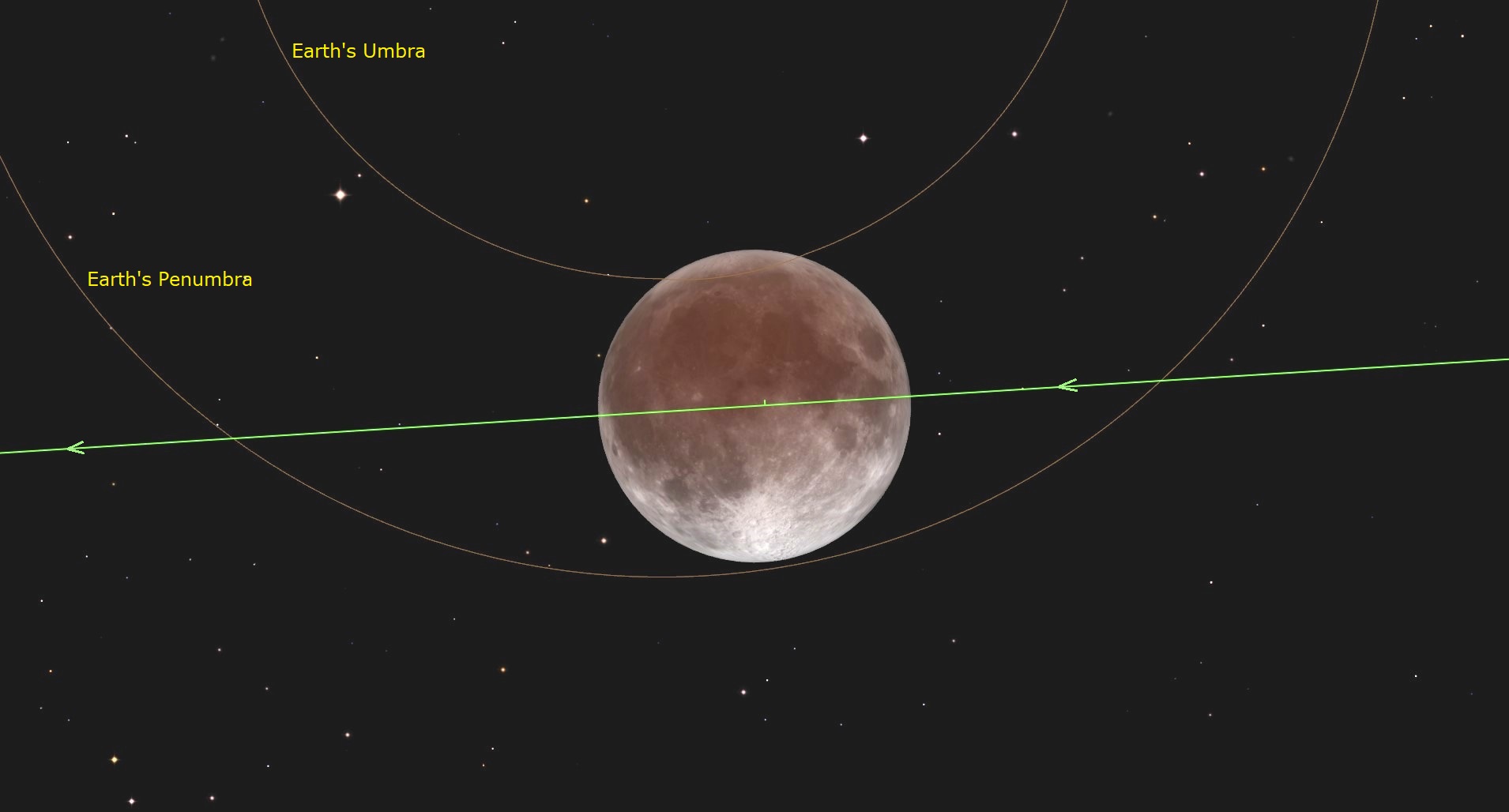On the night of Sept. 17, a partial lunar eclipse will flip the moon a murky red-brown coloration when Earth’s shadow descends upon the lunar floor.
The partial lunar eclipse might be seen from most of North America, all of South America, Europe, all however the easternmost elements of Africa, western parts of Asia and Russia, and elements of Antarctica.
The precise timing of the partial lunar eclipse is dependent upon your location and you should utilize web sites like Timeanddate.com to seek out particular timings primarily based in your location. For these within the U.S. Japanese Time Zone, the eclipse will attain its darkest section, with the moon most obscured by Earth’s umbra, at roughly 10:44 p.m. EDT on Sept. 17. In Europe and Africa, the eclipse will happen through the early morning hours of Sept. 18. In London, the height of the eclipse might be seen round 3:45 a.m. BST on September 18.
In case you are unable to observe the lunar eclipse in particular person you possibly can watch all of the motion unfold on-line right here on House.com. We have now rounded up a number of lunar eclipse livestreams which can be displaying the Tremendous Harvest Moon on Sept. 17.
What causes a lunar eclipse?
In a partial lunar eclipse, solely a portion of the moon passes into Earth’s shadow, creating the looks of a hazy “chunk” taken out of the lunar floor. The shadow will darken the aspect of the moon dealing with Earth. The dimensions of this “chunk” is set by the alignment of the solar, Earth, and moon.
About 3.5% of the moon’s seen floor might be coated by the darkest a part of Earth’s shadow, the umbra. The remainder of the Full Moon will tackle a barely reddish-brown look because the lighter portion of Earth’s shadow which does not completely block the solar‘s mild will descend upon a majority of the lunar floor.
Tremendous particular eclipse

The partial lunar eclipse is further particular because it additionally falls throughout a “supermoon“, the second of 4 supermoons in a row for 2024.
A supermoon occurs when a full moon coincides with the moon’s closest level to Earth in its orbit (which is elliptical-shaped). In consequence, the moon seems barely brighter and bigger than traditional, though the distinction is refined and onerous to detect with the bare eye.
The time period supermoon usually refers to a full moon inside 90% of its closest method to Earth. In accordance with Fred Espanak, eclipse knowledgeable and retired NASA astrophysicist, there might be 4 supermoons in 2024, in August, September, October and November.
A lunar eclipse by no means comes alone
Roughly two weeks after the lunar eclipse Earth will expertise an annular photo voltaic eclipse on Oct. 2. The dazzling “ring of fireside” photo voltaic eclipse might be seen over elements of the Pacific Ocean, southern Chile and southern Argentina.
You’ll be able to sustain with all of the photo voltaic eclipse motion with our photo voltaic eclipse reside weblog. We can even be streaming the eclipse reside on House.com, extra particulars on watch on-line might be launched nearer to the time.
Editor’s word: For those who snap a terrific image of the moon throughout September’s partial lunar eclipse, and wish to share it with House.com’s readers, ship your photograph(s), feedback, and your title and placement to spacephotos@house.com.





